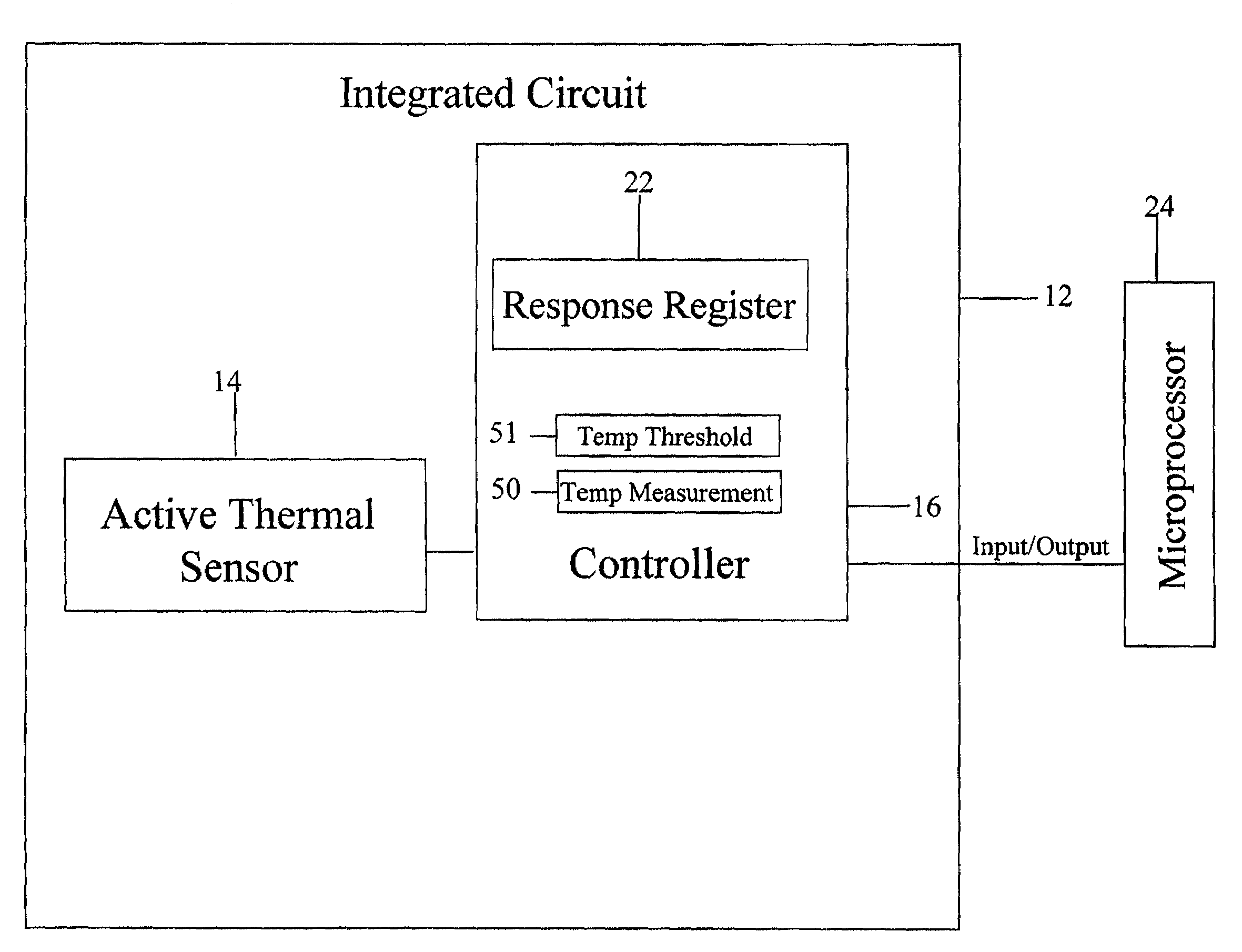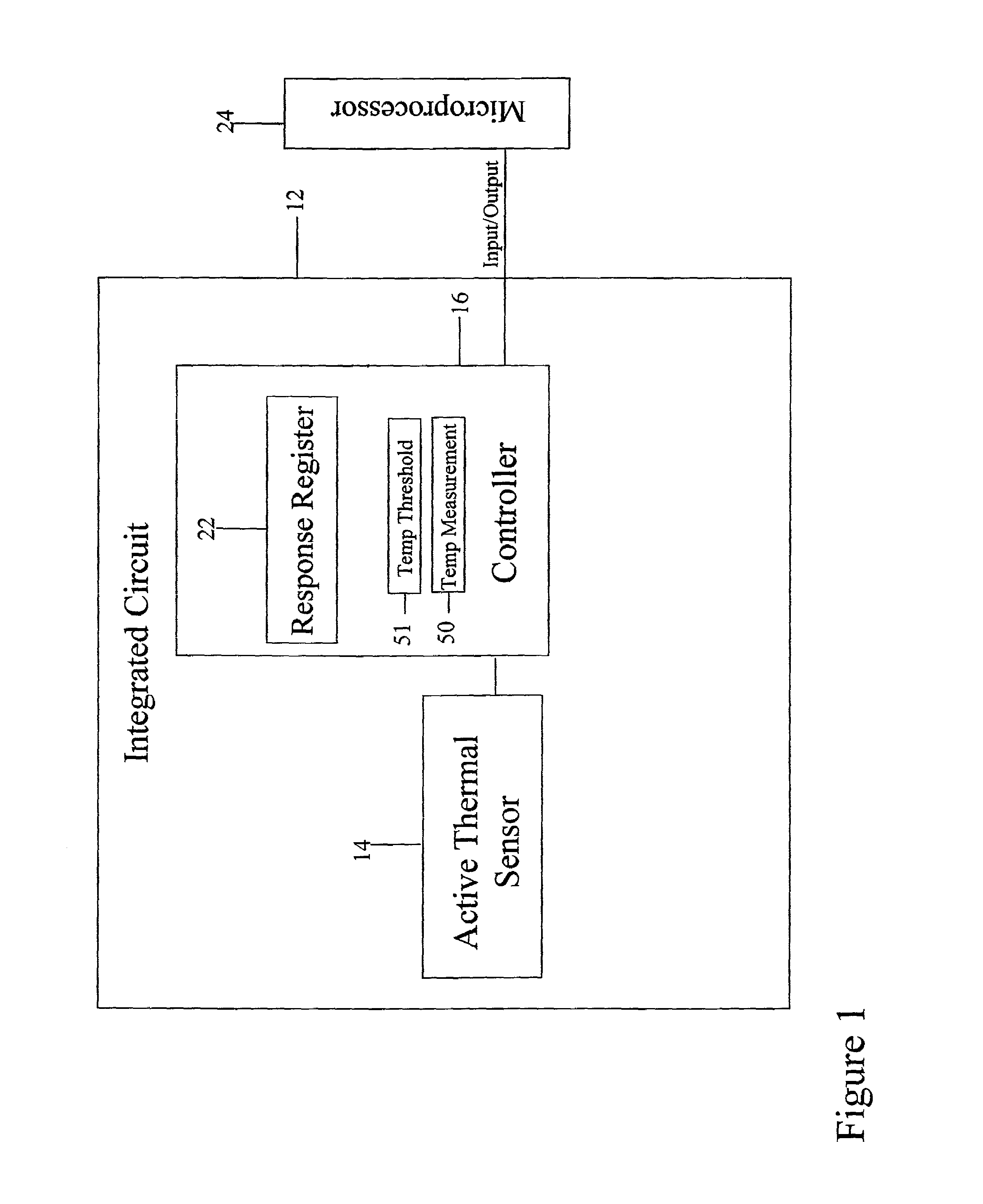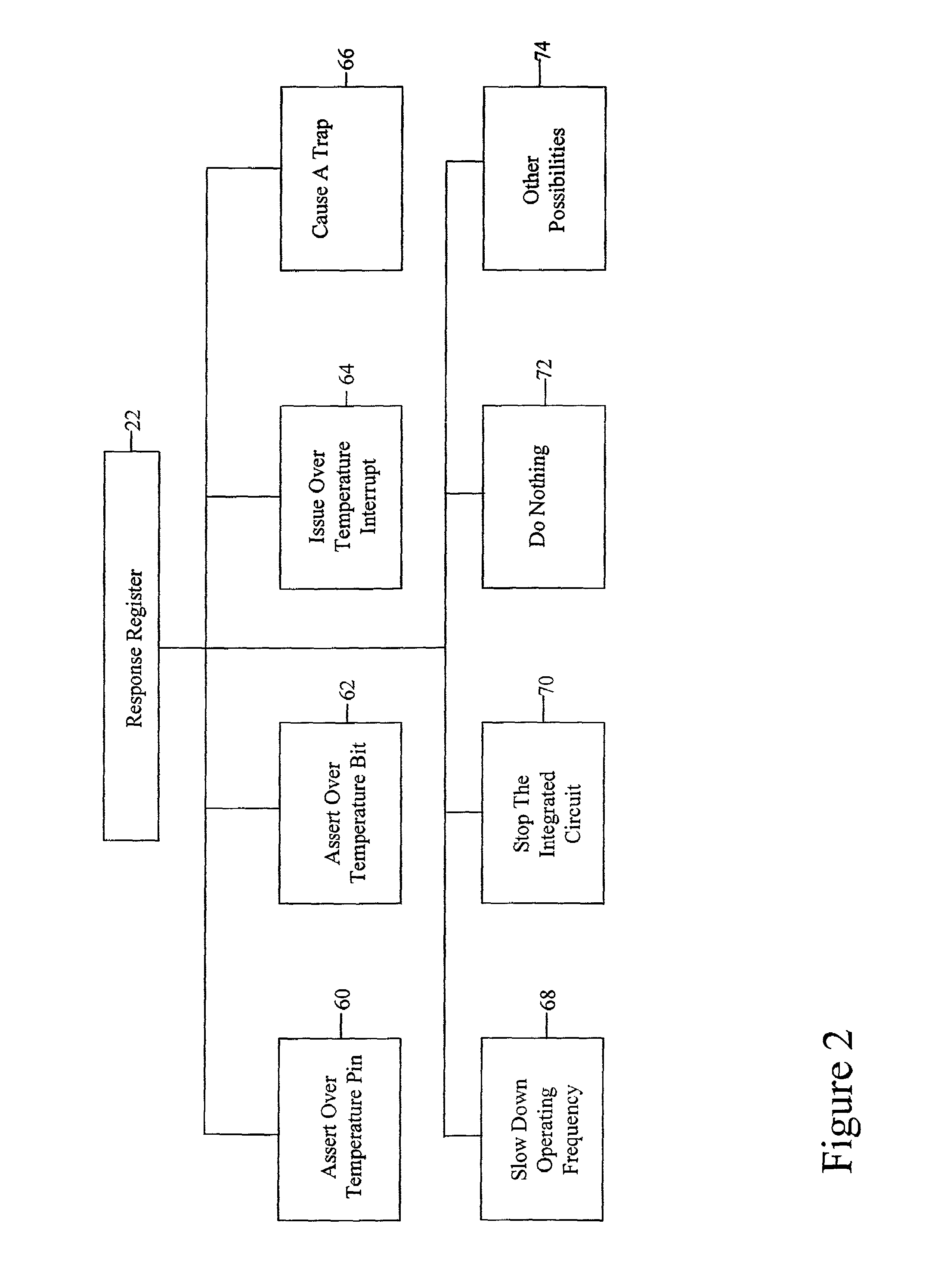Method and system for monitoring and profiling an integrated circuit die temperature
a technology of integrated circuits and die temperatures, applied in the field of integrated circuits, can solve problems such as skewing the system clock of microprocessors, adversely affecting component performance, and affecting the performance of components, so as to avoid unnecessary responses
- Summary
- Abstract
- Description
- Claims
- Application Information
AI Technical Summary
Benefits of technology
Problems solved by technology
Method used
Image
Examples
Embodiment Construction
[0017]For purposes of the discussion below, it is helpful to clarify the meaning of a few terms.
[0018]As used herein, an “active thermal sensor” and an “active calibration thermal sensor” refer to a thermal sensor that requires a source of energy for its operation.
[0019]As used herein, a “passive thermal sensor” refers to a thermal sensor that does not require a source of energy for its operation, for example, an electrical resistor, a diode or other like device.
[0020]As used herein, “calibration” or “calibrate” refers the act or process of determining or measuring one or more temperature measurements while the majority of the circuitry in the integrated circuit is in a non-clocked state.
[0021]The illustrative embodiment of the present invention provides a temperature monitoring system for an integrated circuit that provides one or more die temperature measurements of the integrated circuit to actively monitor and control the die temperature across the integrated circuit. In the ill...
PUM
 Login to View More
Login to View More Abstract
Description
Claims
Application Information
 Login to View More
Login to View More - R&D
- Intellectual Property
- Life Sciences
- Materials
- Tech Scout
- Unparalleled Data Quality
- Higher Quality Content
- 60% Fewer Hallucinations
Browse by: Latest US Patents, China's latest patents, Technical Efficacy Thesaurus, Application Domain, Technology Topic, Popular Technical Reports.
© 2025 PatSnap. All rights reserved.Legal|Privacy policy|Modern Slavery Act Transparency Statement|Sitemap|About US| Contact US: help@patsnap.com



